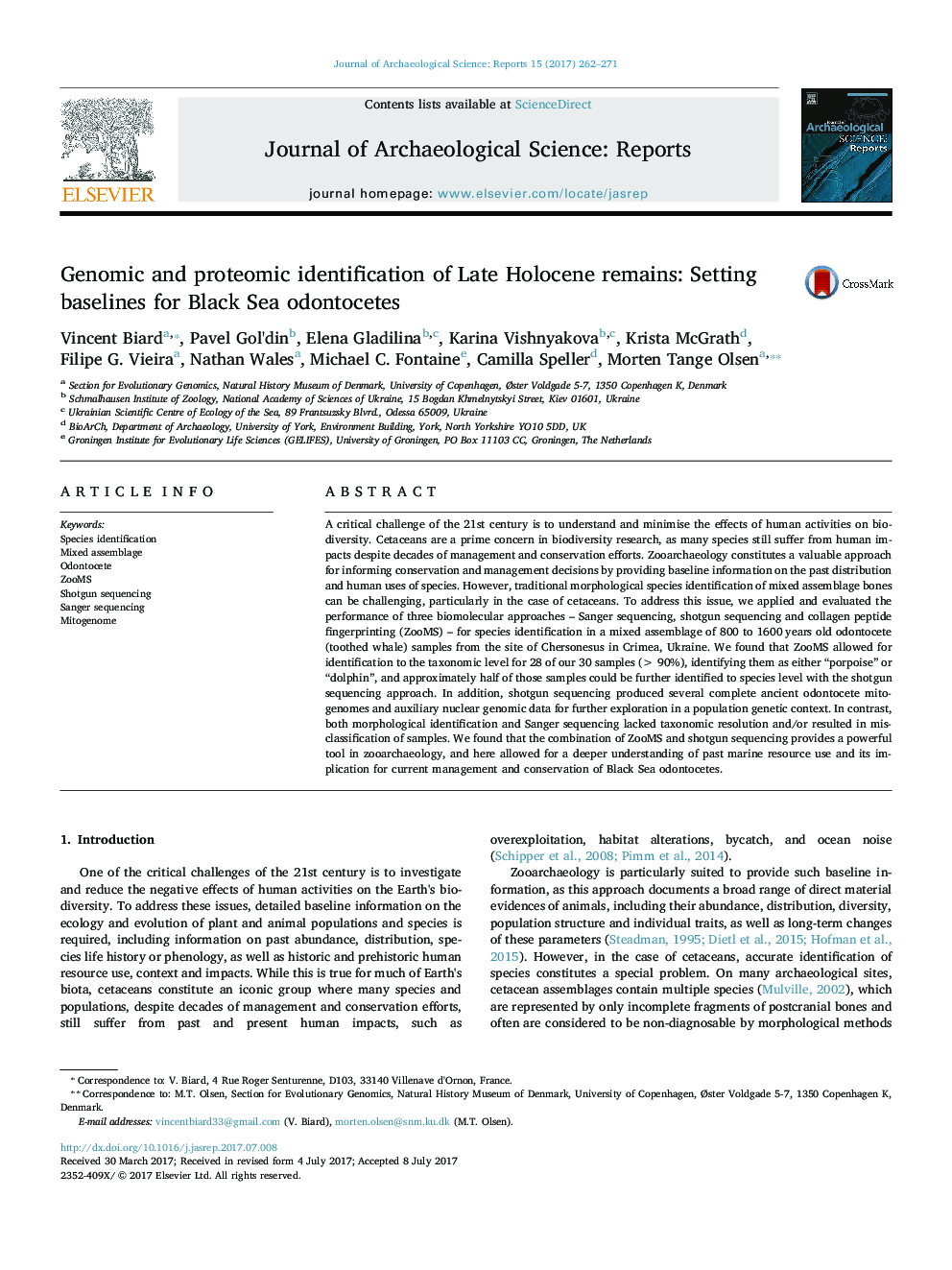| Article ID | Journal | Published Year | Pages | File Type |
|---|---|---|---|---|
| 5112292 | Journal of Archaeological Science: Reports | 2017 | 10 Pages |
Abstract
A critical challenge of the 21st century is to understand and minimise the effects of human activities on biodiversity. Cetaceans are a prime concern in biodiversity research, as many species still suffer from human impacts despite decades of management and conservation efforts. Zooarchaeology constitutes a valuable approach for informing conservation and management decisions by providing baseline information on the past distribution and human uses of species. However, traditional morphological species identification of mixed assemblage bones can be challenging, particularly in the case of cetaceans. To address this issue, we applied and evaluated the performance of three biomolecular approaches - Sanger sequencing, shotgun sequencing and collagen peptide fingerprinting (ZooMS) - for species identification in a mixed assemblage of 800 to 1600Â years old odontocete (toothed whale) samples from the site of Chersonesus in Crimea, Ukraine. We found that ZooMS allowed for identification to the taxonomic level for 28 of our 30 samples (>Â 90%), identifying them as either “porpoise” or “dolphin”, and approximately half of those samples could be further identified to species level with the shotgun sequencing approach. In addition, shotgun sequencing produced several complete ancient odontocete mitogenomes and auxiliary nuclear genomic data for further exploration in a population genetic context. In contrast, both morphological identification and Sanger sequencing lacked taxonomic resolution and/or resulted in misclassification of samples. We found that the combination of ZooMS and shotgun sequencing provides a powerful tool in zooarchaeology, and here allowed for a deeper understanding of past marine resource use and its implication for current management and conservation of Black Sea odontocetes.
Related Topics
Social Sciences and Humanities
Arts and Humanities
History
Authors
Vincent Biard, Pavel Gol'din, Elena Gladilina, Karina Vishnyakova, Krista McGrath, Filipe G. Vieira, Nathan Wales, Michael C. Fontaine, Camilla Speller, Morten Tange Olsen,
